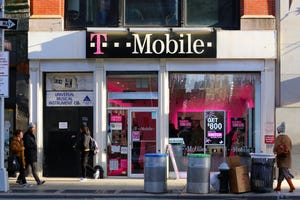China's RCS service still a series of pilot apps
Sixteen months since it was announced, the much-touted 5G messaging system is not yet even a commercial service.

Reports of the birth of China's 5G messaging appear to be greatly exaggerated.
Last November the communist party newspaper the People's Daily announced that the new RCS-based service, supported by all three operators, would "go commercial by the end of the year."
The paper declared that the rich messaging service, expected to be capable of competing with OTT messaging apps, was "regarded by operators as the fastest 5G application" to develop for 5G.
They certainly got that wrong.
5G messaging is still no more than a series of pilot applications for verticals such as government, finance and e-commerce.
The three operators unveiled their plans for the new service in April 2020, issuing a white paper setting out their aspirations and announcing the support of 11 handset-makers, including Huawei and Xiaomi.
Fast forward to today, and now the People's Daily has reported that "the basic 5G messaging platform" has only just been completed.
It says one of the biggest reasons for the delay has been the difficulty in signing up traditional industries.
Many businesses "lack an understanding" of the new messaging platform, it says – yet this might also be simply a lack of interest in a new messaging channel when so many established options are available.
The party newspaper said the emerging ecosystem "is still in its infancy, and will need a period of time to explore how to serve traditional industries."
Want to know more about 5G? Check out our dedicated 5G content channel here on Light Reading.
It also cautioned that spam is likely to be a problem, just as it is in standard SMS, and would require some forward-looking solutions.
"Despite many challenges, the natural advantages of 5G messaging, being registration-free, login-free and installation-free, and [using the] real-name system, bring important opportunities for large-scale commercial use," the commentary said.
Aside from the slow crawl to the starting line, 5G messaging seems to have dropped off the radar of the operators themselves.
In contrast to their confidence of just over a year ago, the operators recently have had little to say about it. It did not rate a single mention in the interim result announcements early this month.
One straw of hope is the growth in existing messaging services, mostly from commercial customers for authentication and notification. China Mobile, the only operator to break out its numbers, reported a 12.5% growth in messaging revenue in the first half.
There is doubtless a ready market in a number of governments and government-linked organizations for the state-backed messaging service when it eventually debuts.
But it's going to be an uphill task to persuade enterprises to choose the new marketing and information platform over successful legacy channels.
— Robert Clark, contributing editor, special to Light Reading
Read more about:
AsiaAbout the Author(s)
You May Also Like




.jpg?width=300&auto=webp&quality=80&disable=upscale)







